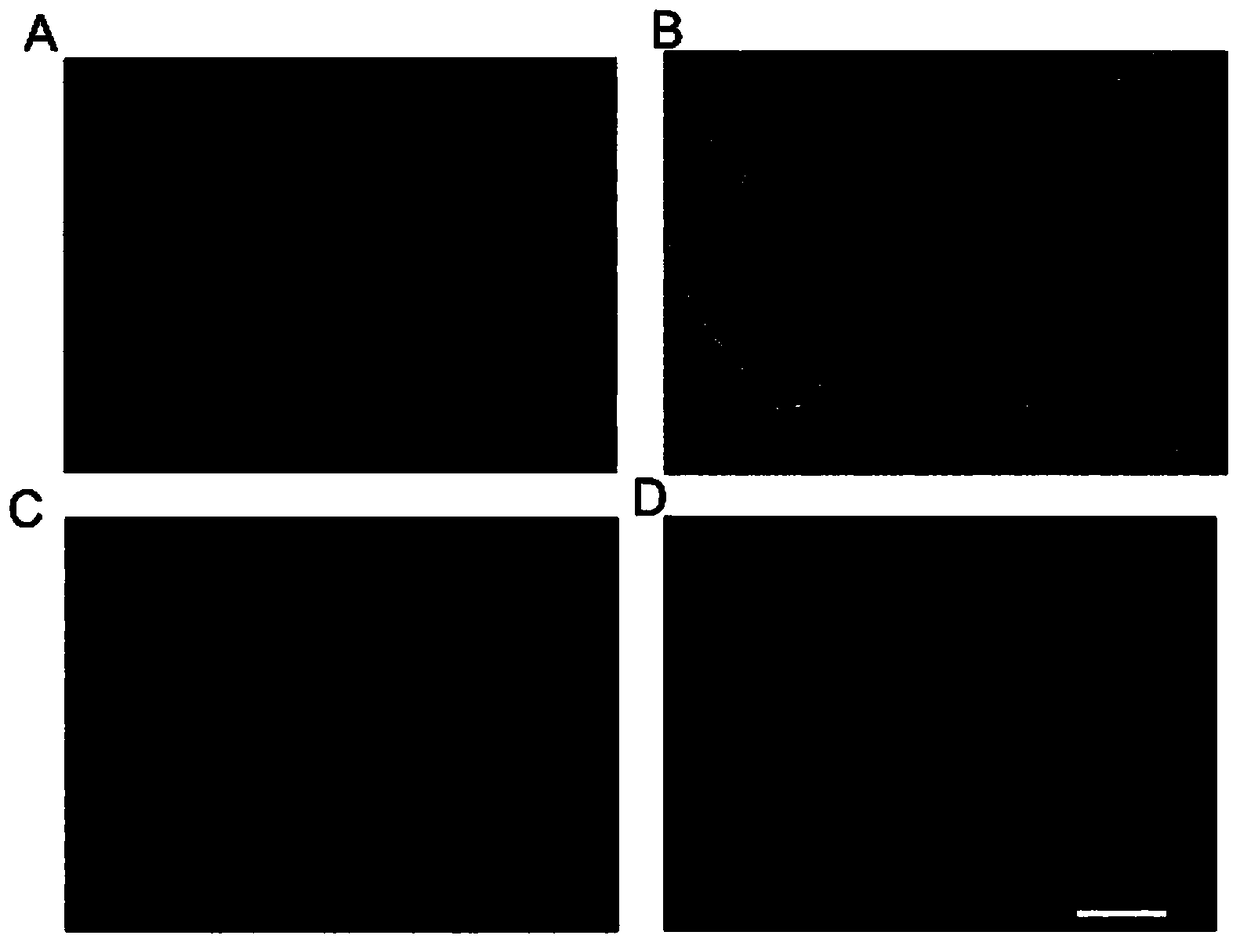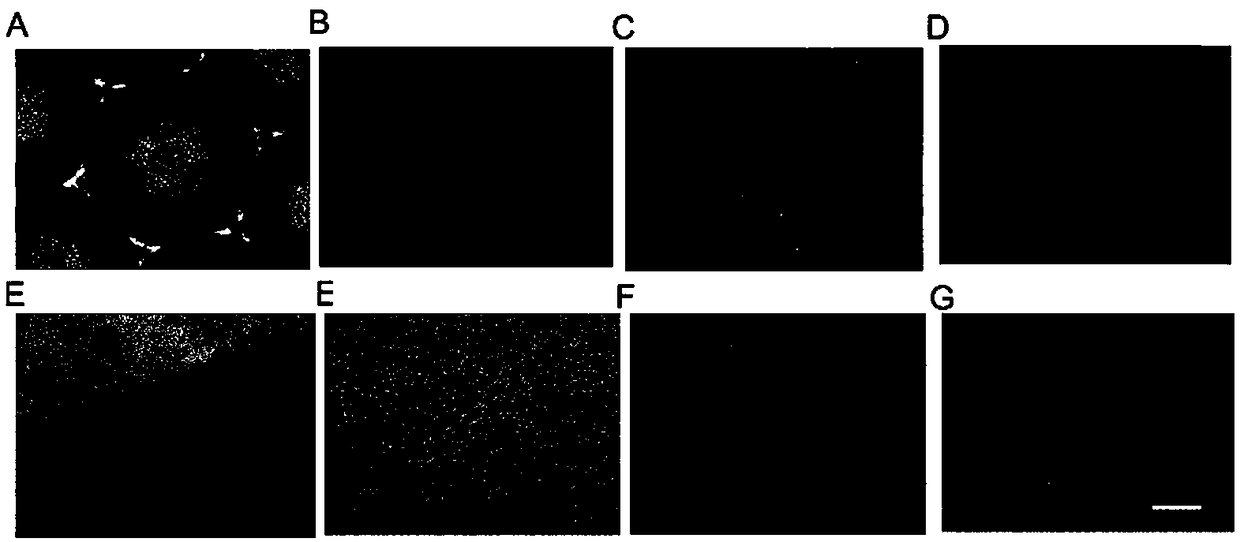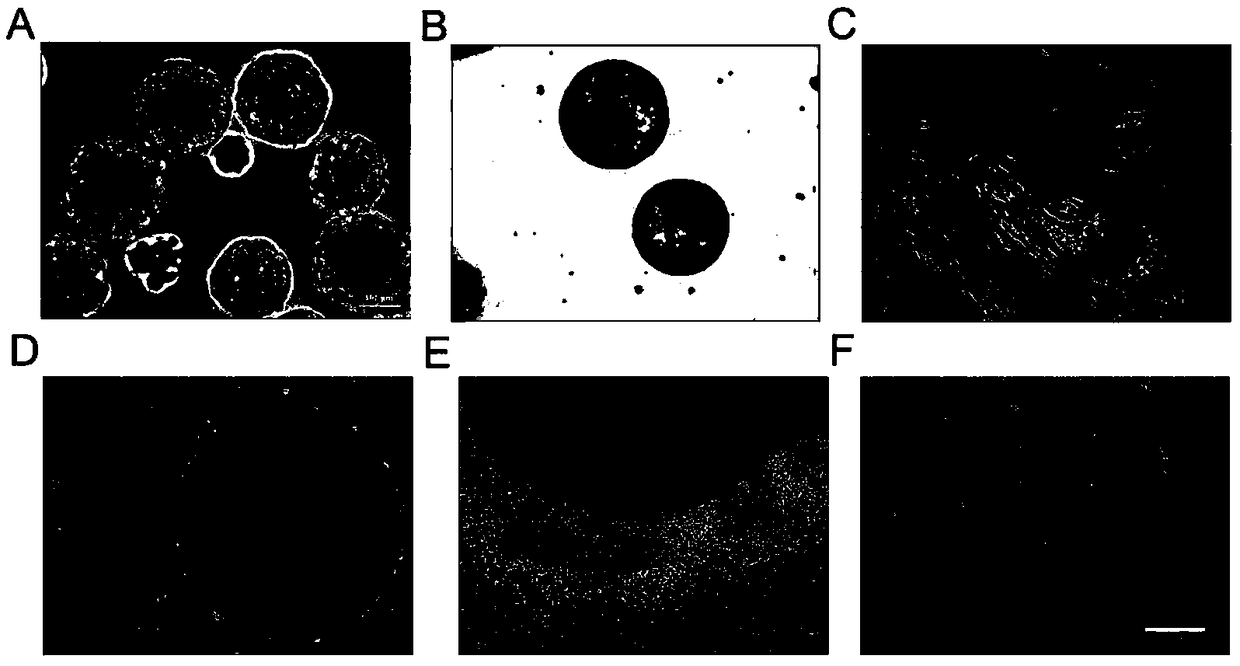Method for generating autologous melanocytes based on 3D suspension iPS (induced pluripotent stem cells) and application
A technology for the generation of melanocytes and cells, applied in the biological field, can solve the problems of uneven size and shape of embryoid bodies, unable to obtain mature melanocytes, low differentiation efficiency, etc., and achieve the effect of excellent performance advantages.
- Summary
- Abstract
- Description
- Claims
- Application Information
AI Technical Summary
Problems solved by technology
Method used
Image
Examples
Embodiment 1
[0037] Traditional method (2D differentiation):
[0038] Such as figure 1 As shown, the size and shape of embryoid bodies produced by traditional methods (such as mechanical methods) are highly heterogeneous ( figure 1 A); These embryoid bodies will be fully spread out when cultured on a 2D plane, generating a large number of epithelioid cells, while the proportion of dendritic cells is very small ( figure 1 B) Single cell digestion was carried out at 21 days of differentiation, and it can also be observed that most cells in the adherent single cells maintain polygonal epithelioid cell morphology, and the proportion of dendritic cells is very small ( figure 1 C); due to the low proportion of melanocytes and slow proliferation, while the high proportion of epithelioid cells and rapid proliferation, mature melanocytes are often not obtained after several passages ( figure 1 D).
Embodiment 2
[0040] a. Production of embryoid bodies by single-cell method
[0041] When the iPS cell clone grows to a moderate size, add the iPS single-cell digestive enzyme ACCUTASE TM (InnovativeCell Technologie), put it at room temperature for 5-7 minutes, add mTeSR (Stemcell Technologies) medium and blow it into iPS single cell suspension, discard the supernatant after centrifugation, add mTeSR medium to resuspend and count, and inoculate iPS single cells into Elplasia TM Three-dimensional culture plate (Kuraray) inside ( figure 2 A) The seeding density is taken as an example in a 24-well plate, and 5×10 5 Cells were added with ROCK inhibitor Y27632 (Wako) at a final concentration of 10 μM, cultured at 37 degrees, and after 24 hours, cultured embryoid bodies with uniform shape and size were formed ( figure 2 B) Gently pipet and aspirate the embryoid body, transfer it to a low-adhesion plate (Corning) to continue culturing, and change the medium every day.
[0042] b. 3D Suspe...
Embodiment 3
[0053] Choose embryoid bodies of different culture days and sizes for 3D suspension induced differentiation:
[0054] In the process of inducing differentiation, the present invention selects embryoid bodies with different culture days and sizes to induce differentiation, and compares the effects of culture days and embryoid body sizes on induced differentiation. Such as image 3 As shown, the embryoid bodies with a loose structure and a diameter of less than 200 μm were cultured for less than 3 days ( image 3 A), in the early stage of differentiation (differentiation day 14), there will be a large number of vacuolar-like structures ( image 3 B), after attachment (differentiation day 21), these structures showed a flat and wide shape, without the ability to proliferate ( image 3 C). However, embryoid bodies with a diameter greater than 700 μm ( image 3 D), after differentiation (15th day of differentiation), most of the cells in the central dark area could not adhere t...
PUM
| Property | Measurement | Unit |
|---|---|---|
| diameter | aaaaa | aaaaa |
Abstract
Description
Claims
Application Information
 Login to View More
Login to View More - R&D
- Intellectual Property
- Life Sciences
- Materials
- Tech Scout
- Unparalleled Data Quality
- Higher Quality Content
- 60% Fewer Hallucinations
Browse by: Latest US Patents, China's latest patents, Technical Efficacy Thesaurus, Application Domain, Technology Topic, Popular Technical Reports.
© 2025 PatSnap. All rights reserved.Legal|Privacy policy|Modern Slavery Act Transparency Statement|Sitemap|About US| Contact US: help@patsnap.com



